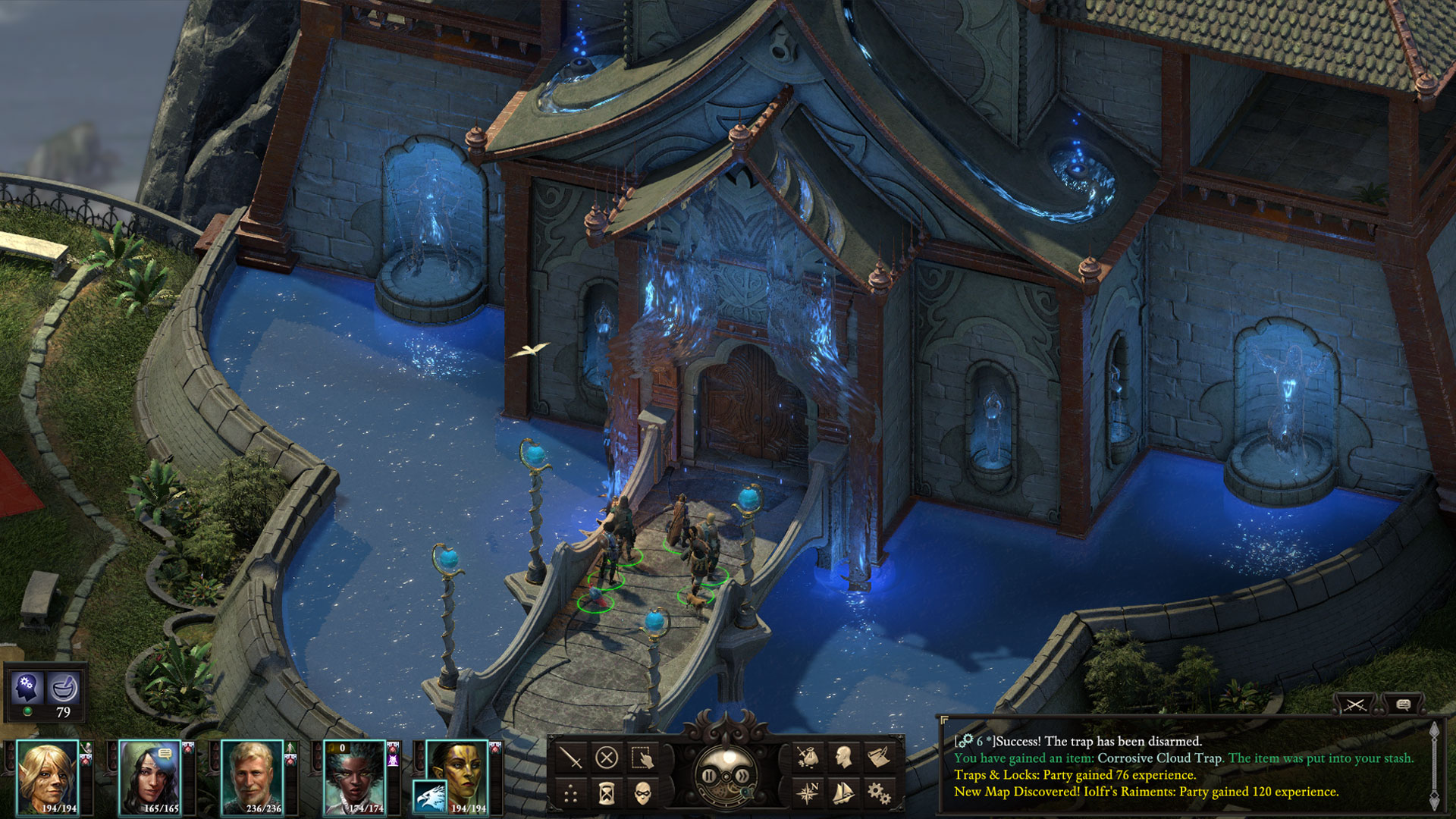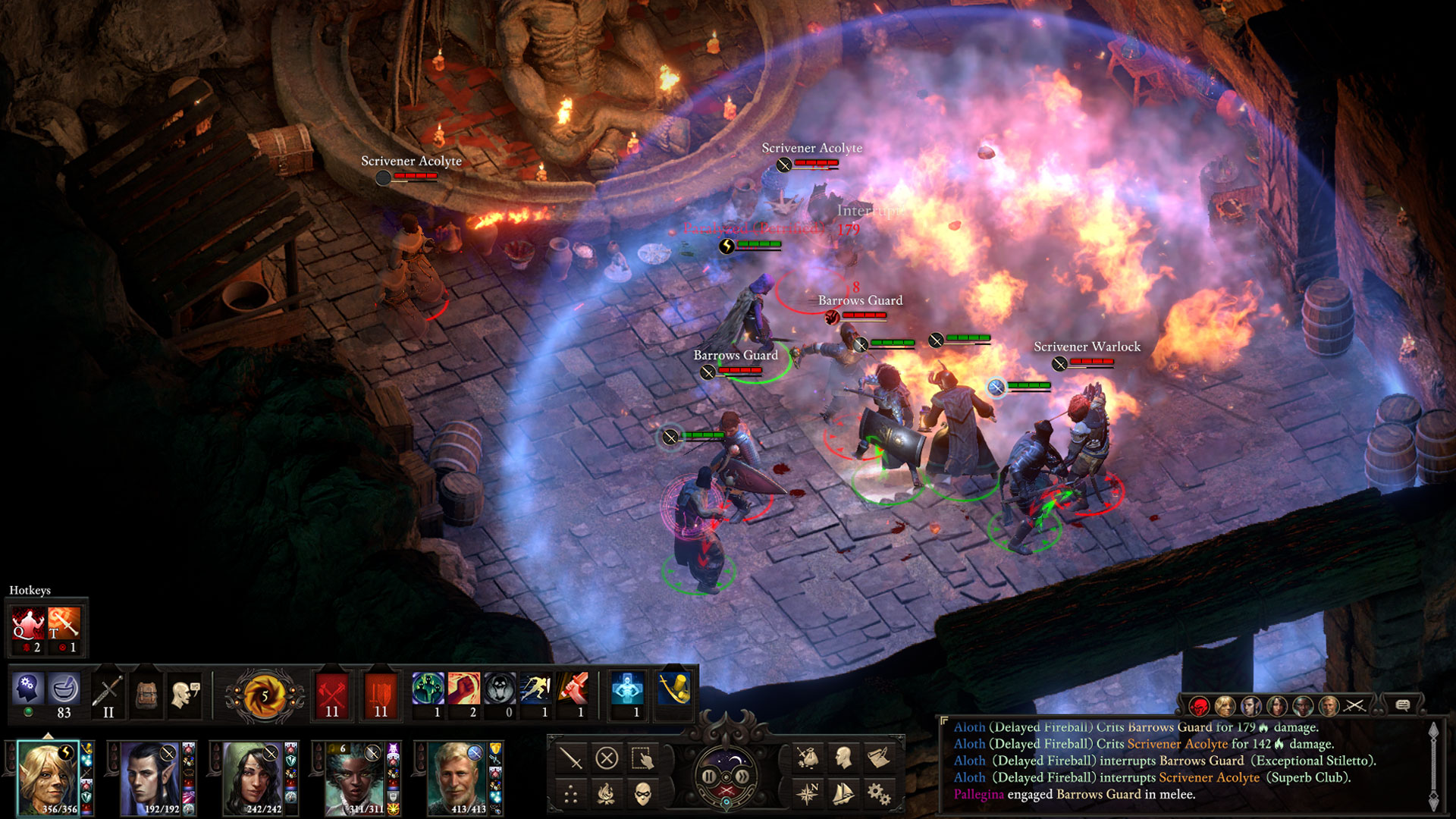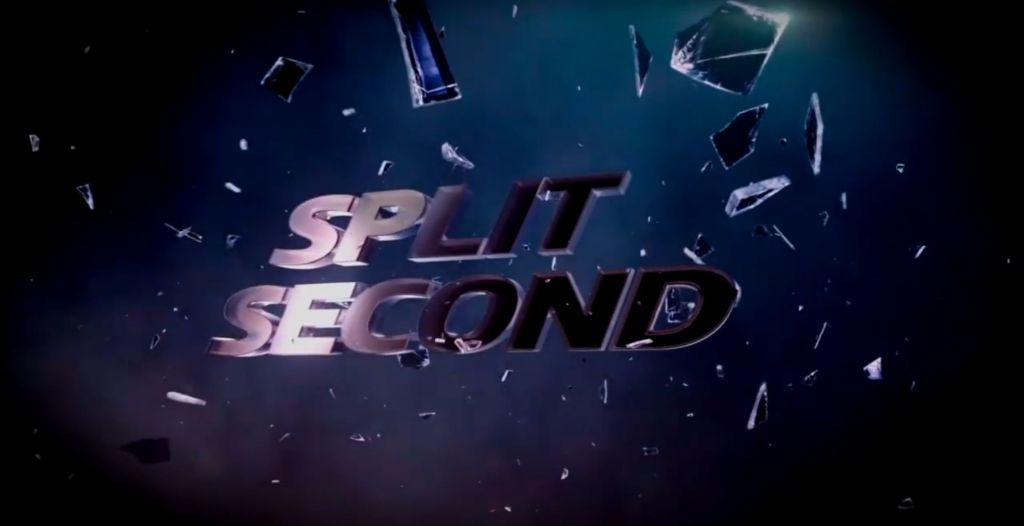Pillars of Eternity II: Deadfire is a specialty product. After all, it’s a sequel to Pillars of Eternity, the crowdfunded throwback isometric role-playing game hearkening back to the heyday in the genre in the early 2000s. If you love those games and yearn for more of them, then you are the intended audience for this game. This might be its biggest problem. Because while I love those original Fallouts and the Baldur’s Gate games, I can’t help but feel that Deadfire is hampered because it has to bear a family resemblance to those long-ago predecessors. It is worse for it. It is a game whose many excellent high points are dragged down by slow, plodding ones, and almost all of the latter are due to what it is obligated to be.
Pillars of Eternity 2, like the original and the games it borrowed from, is a fantasy-ass video game. The lore is deep, and the connections between the factions, their leaders, their adherents, their religions, their perspectives on those religions, and their political beliefs are are shaped by the context of the world that they are in and its history. The lore is so deep that the dialogue boxes have hover-over text that will define terms for you, often handing you a tooltip that contains two paragraphs of text about the aspect of a god. It’s a complicated world that requires some buy-in from a player who is eager to learn and explore. Let me give you an example:
Videos by VICE
The Principi sen Patrena are the last remainder of noble families from the fallen empire of Grand Vailia. The world of the Pillars of Eternity franchise is chock full of empires who have shattered (or at least seen better days), and the Principi dealt with their collapse in the way that any faction might. They loaded up on ships, sailed away from their homeland, and looked to settle on the islands of the Deadfire Archipelago. And, for whatever reason, they just didn’t. Now, hundreds of years later, the Principi are a powerful faction of pirates that raid the Huana, The Royal Deadfire Company, and the Vailian Trading Company equally.

Wait, you might be asking, who the hell are all of those factions? Is the Vailian Trading Company the same as Grand Vailia? I thought it fell?!
This is what I mean by saying the game hampers itself. It’s a fantasy universe with seemingly endless complexity and depth, and that expectation of depth emerges from its lineage. Deadfire is a throwback to the Baldur’s Gate games and Planescape: Torment, well-loved isometric RPGs that were built on dozens of years of official Dungeons & Dragons worldbuilding created in hundreds of official books. Baldur’s Gate is set in the Forgotten Realms, a long-running setting for Dungeons & Dragons that is so beloved that the 5th edition of the game adopted it as the “official” setting. There are a couple dozen gods, a number of competing factions, and lots of powerful figures in a world of maximal wizardry and plane-jumping action.
Pillars of Eternity is a nostalgia romp for that exact kind of experience, and it felt like Baldur’s Gate with the serial numbers filed off. It contains a huge amount of backstory and lore to because fantasy RPGs in this subgenre took place in worlds with a lot of preexisting lore. To create a new world that feels old, the writing team on PoE had to create an equivalent world of gods and mortals that felt it was based upon, but was not, the lore and worldbuilding that had built up naturally in D&D and formed the base for Baldur’s Gate. It is a rule of the genre, like a noir’s internal monologue or a thriller’s third act twist. It’s not just the storytelling that needed to be recreated and repackaged for PoE. The game also needed that pseudo- D&D “pause and play” combat that those developers back then were using as a facsimile of the tabletop combat experience.

Deadfire is weighed down by all these historical influences. The plot is simple as far as RPGs go: A god who lived under your house has awoken, and he smashed your house while digging himself out. He immediately beelined for the Deadfire Archipelago, a set of almost-Caribbean islands with many factions competing for dominance over them. While knocked out from trauma, the player finds themselves to be chosen by the god of death to stop, or at least bargain with, this colossus-god who is kicking ass across the islands. Upon waking, the player discovers they have a ship to manage and some quests to do across a very large ocean map.
I don’t want to discount the fun and legitimate joy of playing those missions. For every “go there, kill them, come back” or fetch quest there are legitimately interesting ways of interacting with the isometric world that exists all around the player. In one instance, I unknowingly did a set of quests for the aforementioned Principi and received, to my surprise, a flag that would allow me to bluff my way into a pirate fort. Later, I killed a man with a harpsichord. There are also classic Fallout 2-ish quests where there legitimately doesn’t seem to be a “right” answer to the whole ordeal, giving many of the missions a crunchy realism that does seem to echo out into the world.

At the midpoint of the game, for example, you are sent to an island that is having some trouble. The Vailian Trading Company is looking to extract resources from the island’s native population, but their expedition went missing. Worse, the island community seems to slowly be wasting away due to storms and fishmen attacking them and their food supply. The leader of the community wants the Trading Company on the island so that he can improve the quality of life for his people, but the player knows that it would come with, well, what trading companies do to communities they pillage. Raising the stakes even more, a competing company wants you to destroy the resources so that they can come and recruit the island into their empire. It’s complicated, each conversation is a wheel within a wheel, and no matter what happens you are disappointing someone. It’s legitimately interesting, touches on the game’s extended themes of colonialism (which I cannot go into at length here because this truly is a game about colonialism), and it makes up for the inevitable dungeon crawl that exists at the conclusion of the mission.
The time between these interesting quests, though, is filled with things I have grown tired of as someone who has been playing games like this for nearly 20 years. I don’t need to walk through dungeons anymore. I don’t need to fight trash mobs that stand between me and the big fight at the end of the dungeon (or, in the case of Deadfire, often the big talk at the end of the dungeon). While I know that there are lots of people who play these games for the tactical combat, and that they enjoy these games a lot because of it, I have a hard time getting truly engaged by the fights of Deadfire when I know that I could just be playing XCOM 2. Pausing, assigning optimal actions, and watching it play out feels like a legacy system and a bid for nostalgia and not something that is inherently worthwhile. And while a “Story” mode exists to facilitate this, it does not remove all of the time you spend wandering through dungeons waiting for enemies to die so you can actually get that next bit of story.
In some ways, this mirrors my changing tastes in the actual tabletop gaming space as well. When I first began playing Dungeons & Dragons and the like, I savored the combat. I liked solving the puzzle that was an enemy and its particular skills. Similarly, I enjoyed the dungeon crawl, the slow, plodding action of moving through a place I was not supposed to be in order to defeat an evil being who was more powerful than I was. But as I have gotten older, and as I’ve discovered all the things that tabletop games can do in their wide variety, I have less patience and interest in the clunkiest, most old-school ways of playing. I want to know what happens to the kingdom if I release the Orb of Sun from its demonic cage. I don’t care about rolling to see if I can pick that cage up, and I certainly don’t care about fighting the 200 goblins between that Orb and myself.

My feelings about these throwback isometric RPGs are similar. I loved them when they were what was available to me. Baldur’s Gate and Fallout 2 allowed me to do things that no other game I had played before did. They were great at encapsulating that tabletop roleplaying that fascinated me, the storytelling of science fiction and fantasy I had been reading, and this almost-limitless free feeling of being able to do whatever I wanted within the fictional boundaries of that world.
Those things I loved (the storytelling) were stapled to things that I didn’t (clunky combat systems). And now it’s 20 years later, and I’m still playing these games and getting the same basic structure with very little difference and innovation beyond those games from all those years ago. Maybe developers who want to make particular experiences. Maybe players yearn, nostalgically, for the same way they felt all that time ago. Whatever the reason, it feels heavy. At its worst moments, Deadfire feels like I’m stuck in a time loop, looking at the same cursors and hearing the same general NPC dialogue that I grew tired of a long time ago.

Maybe it’s just because there’s not a lot of room in the isometric RPG space. Torment: Tides of Numenera, another nostalgia project, had a similar feel to it. It’s worth considering if the constraints of what this genre has to look like, how it has to be displayed, and the legacy inventory / stat sheet / combat mechanics are truly too heavy to overcome even if the narrative work truly does shine in comparison to past games.
This reliance on legacy systems sticks out to me so much because of how much I enjoy the new parts of Deadfire. I’ll go out on a limb here and say that the most compelling, gameplay-and-narrative sections of the game are almost a visual novel, and I deeply want to play that version of this experience. As I said before, it’s a game with a huge amount of lore, and figuring out how all of it fits together is part of the fun of settling yourself into the game. There are long conversations with the pantheon of gods where you can pit them against each other, endear yourself to some of them, and question the very assumptions that make up Deadfire’s world. They’re long, they’re interesting, and it’s a very small part of the game compared to how much walking through dungeons you have to do.
There’s also quite a lot of playing factions off of one another. Manipulating trade companies, doing bounties for them, and trying to weasel your way into everyone’s good graces so they won’t see you betray them is cool. The rival factions of The Royal Deadfire Company and The Vailian Trading Company are pitted against each other by the player through dialogue options with several characters across many different islands (as well as a couple of the more exciting missions), but it always felt to me like the early 2000s were always intruding on these intricate politics with clunky combat and time-wasting walks across beautiful maps. When the game is all about skill checks in a big roster of skills and dialogue options, it is running on all cylinders and feels like one of the best narrative games I’ve played in the past couple years. When it’s leaning into what it has to be, it starts feeling like I’ve been here before.

The boat combat is a great example of how good Deadfire’s new ideas can be when they’re free of obligation to conventions. Since you’re traveling across an archipelago, you need a boat, and that boat can encounter other boats. When that happens, a series of choices appear, and some of them are narrative-based (like, say, encountering a plague ship that appears to be abandoned). In other instances, you end up in combat, which is a short mini game that plays out in choices about how to maneuver and when to shoot at the other ship. Crucially, it does not happen on a “game board” or some kind of visual grid. Instead, there is a visual element to show the positions of the ship, there are some numbers about distance and health, and the rest is communicated in short, turn-based narrative bursts.
It’s pure brilliance, taking the power of ship to ship combat and putting it entirely in the theater of the mind. It relies on its narrative chops and a set of clear mechanics to allow you to imagine whatever you want, and in that way it’s like the best version of that tabletop-to-video game adaptation line. The ship combat leans into what made those isometric RPGs so interesting to me all those years ago but with my current understanding of what makes the tabletop space so exciting. Let me direct the action and experience the consequences of that action, don’t bog me down in interminable details that I don’t enjoy. It’s new, it’s different, and it’s where these game could go if they broke with tradition more often.
Building a game that make promises is hard. Playing into nostalgia without delivering the exact same experience or alienating players with too much new stuff is even harder. Deadfire manages to maneuver itself between those two things, and it’s impressive for that alone. But I can’t help but feel that the real core of these games could be delivered as something else, and that a different kind of format would ultimately work much better for the kinds of experiences that Deadfire delivers best.
More
From VICE
-

Screenshot: Disney Interactive Studios -

Screenshot: Electronic Arts -

Screenshot: Larian Studios -

Screenshot: Electronic Arts
